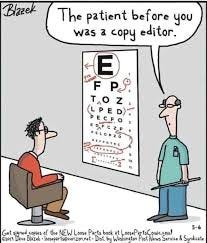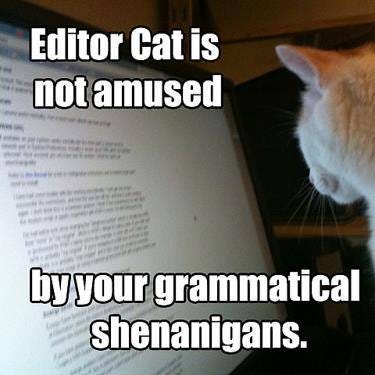For the past year and a half, I have been employed by the small-but-mighty Raconteur Press as one of their copy editors. To date, I have edited about forty short stories (there are approximately ten per anthology) plus three juvenile boys adventure novels. This is work which I very much enjoy doing. My husband likes to say that I’ve been editing him for thirty years, and his writing for two.
He’s not wrong.
Copy editing is something I was born to do. Like it or not, I’m the sort that tends to notice every stinkin’ typo in every email I receive at my day job. I’m nice enough not to point out the errors, but they do make me cringe a little. Don’t get me wrong—I’m sure I often make errors of my own, but I try to at least read what I’ve typed before hitting send, so I will catch most of my typos at least the majority of the time.
In addition to checking for spelling errors, typos, punctuation, and oddball grammar, it is also important for copy editors to notice correctly spelled words that are, in point of fact, incorrect. One of the most memorable that I caught was from an author who meant to write that a character steepled his fingers. What he actually typed was that he steeped his fingers. Ouch!!
A good copy editor cares—or at least, should care—about helping to ensure the author’s voice and story are clear. Phrases can occasionally be unintentionally ambiguous, particularly when pronouns get involved in the act: which “he” said or did something, when there is more than one in your scene or conversation? It may be crystal clear to the writer, but will it be clear to the reader? Changing one or two pronouns back to the character’s name is an easy way to prevent confusion.
Copy editors also try to catch inconsistencies. I have often found a term hyphenated in one paragraph of a manuscript, yet the hyphen mysteriously vanishes two pages later. Hmmm.
Mistakes such as the above affect the clarity of the work, as well as being a distraction to the reader, and that impacts the overall quality of the writing. At some point, you will likely hit a problem that requires a judgement call, and for that you’ll want to consult a style guide. RacPress uses the Chicago Manual of Style, although I’m told one of our structural editors has a disconcerting fondness for the 1974 edition of Words Into Type. Fortunately, there are no restraining orders against him that we know of, so we do our best to ignore it.
Don’t get me wrong—all the stories and novels I’ve had the pleasure to work on have been quality works to start with, or they wouldn’t have been selected for publication. But let’s face it: mistakes happen. People type too fast, their thoughts get ahead of their fingers, they’ve reworded a section so often that they have become word-blind to the new mistakes they’ve made, or they get inconveniently interrupted by kids, cats, or the TV.
My job as a copy editor is to read through the manuscript and guarantee that the i’s are dotted and the t’s are crossed, not the other way around (FYI: it’s harder to read with your eyes crossed) to ensure nothing distracts our readers from enjoying the highest quality publications possible.
I hope I’ve succeeded.






Thank you for your service.
Been doing pro-bono copy-editing for a while. And I usually throw it in with my covers.
Keep the torch alight sister! Together we'll put "discrete" back into the ordering system where it belongs 😸